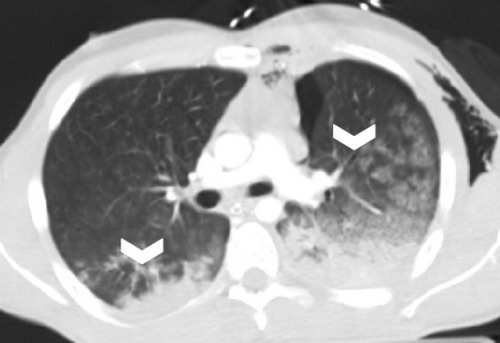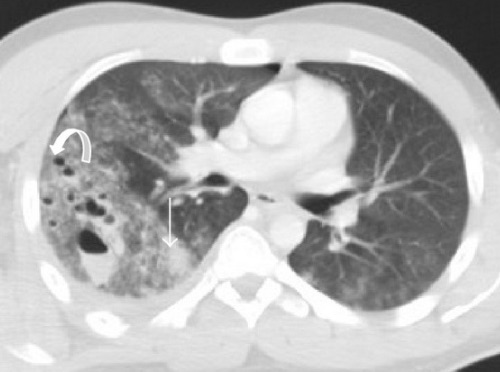Pulmonary Injury
Pulmonary Injury
David Ray Velez, MD
Table of Contents
Pulmonary Contusion
Lung Laceration
Complications
AAST Lung Injury Scale
- *See AAST
- Injury Scale is Under Copyright
Pulmonary Contusion
The Most Common Lung Injury
Most Common in High-Energy Blunt Trauma – High Association to Motor Vehicle Crashes (MVC)
Injury Causes Edema and Inflammation Resulting in Impaired Gas Exchange
Contusions “Blossom” (Worsen) Over Time
- Often Presents within 4-6 Hours
- Evolves Over 2-3 Days
- Most Often Resolves within 1 Week
Diagnosis
- Generally Made Radiographically – CT (Best) or CXR
- Imaging Changes Evolve Slowly and Often Lag Behind a Worsening Respiratory Status
Treatment
- Primarily Supportive Management
- Judicious Fluid Administration and Diuretics as Appropriate
- Pulmonary Hygiene
- Supplemental Oxygen as Needed
- Severe Contusions May Progress to ARDS

Pulmonary Contusion 1
Lung Laceration
Indications for Surgery
- Thoracic Trauma with Hemodynamic Instability (And No Other Obvious Source)
- Hemothorax with Large Volume
- Initial Loss > 1,500 cc
- Continual Loss > 200 cc/hr for 4 Hours
- *Some Say 250 cc/hr for 3 Hours
- CAUTION: A Dramatic Decrease in Volume Can Be Due to Complete Evacuation but Can Also Occur Due to Clotting within the Chest Tube
Surgical Management
- Generally Approached Through an Anterolateral or Bilateral “Clamshell” Thoracotomy in Trauma
- Superficial Laceration: Pneumorrhaphy (Closed with Simple Absorbable Suture)
- Large Laceration: Wedge Resection
- Deep Penetrating Wound: Pulmonotomy (“Tractotomy”) with Selective Deep Vessel Ligation
- Pulmonotomy (“Tractotomy”): Linear Stapler Placed Through the Tract to Open the Site and Better Access the Deeper Bleeding Vessel
- Consider Oversewing the Staple Line if Concerned for Bleeding or Air-Tight Seal
- Devascularized/Destroyed Lobe: Lobectomy
- Pneumonectomy is a Last Resort if All Else Fails – Complicated by Severe Respiratory Failure and Right-Sided Heart Failure

Lung Laceration with a Pneumatocele (Curved Arrow) and Hematocele (Straight Arrow) 1
Complications
Complications
- Pneumonia (PNA)
- Empyema
- Pneumothorax (PTX) – Due to Alveoli Rupture
- Persistent Air Leak and Bronchopleural Fistula
- Hemoptysis – Can Be Sever/Life-Threatening
- Hemothorax (HTX)
- *See Hemothorax (HTX)
- Pulmonary Vessels are High-Volume Low-Pressure Circuits
- Retained Hemothorax
- Chylothorax
References
- Palas J, Matos AP, Mascarenhas V, Herédia V, Ramalho M. Multidetector computer tomography: evaluation of blunt chest trauma in adults. Radiol Res Pract. 2014;2014:864369. (License: CC BY-4.0)
